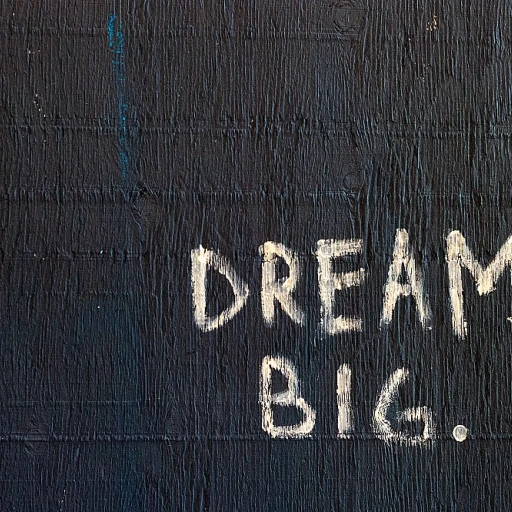
Understanding Ageism in the Workplace
Decoding the Reality of Ageism
Ageism in the workplace is a pressing issue that affects both younger and older workers, but its subtlety often makes it difficult to identify. At its core, ageism is a form of discrimination based on age, impacting employment opportunities, workplace culture, and career progression. In today's competitive job market, organizations must grapple with the challenge of recognizing and addressing age bias to foster a more inclusive atmosphere.
An increasing number of employers are acknowledging the benefits of age diversity and inclusion. However, instances of age-based prejudice continue to surface, manifesting in various forms across different sectors. The consequences of underestimating the value of older employees, or favoring younger candidates due to perceived technological or cultural alignment, can impact the company's bottom line and its reputation.
Ageism can occur in myriad situations. At times it is overt, such as when employees are compelled to retire at a certain retirement age. More often, it is embedded within the work culture, reflected through biases in hiring practices, promotional opportunities, or through the marginalization of certain age groups. This includes overlooking candidates with extensive years of experience or assuming younger workers have an edge in innovation.
The challenge for companies is not just legal compliance, which is highlighted by employment laws against discrimination, but actively creating policies that counteract age discrimination. Thoughtful strategies can make a significant difference in tackling this issue, which is discussed later in the article.
While the law offers a framework for protection, as covered extensively by employment law, it is crucial for organizations to actively recognize age bias and work towards leveling the playing field for individuals of all ages.
Common Examples of Ageism
Prevalent Manifestations of Ageism in Professional Settings
Age discrimination can manifest in numerous subtle yet impactful ways within the workplace, often affecting both older and younger employees. Recognizing these patterns is crucial for fostering a fair and inclusive environment. Here are some common scenarios where age-based discrimination surfaces:- Promotion and Advancement: Older workers may encounter barriers to promotional opportunities due to stereotypes associating age with decreased energy or innovation. Conversely, younger employees might be overlooked for leadership roles based on assumptions about their lack of years of experience.
- Training and Development: Companies may hesitate to invest in skill development for older employees, perceiving them as closer to retirement age, thereby missing the opportunity to leverage their vast experience.
- Workload Distribution: Age bias can also appear in the allocation of tasks. For example, older employees may find themselves assigned less challenging projects under the presumption that they're less capable or unwilling to adopt new technologies. Meanwhile, younger workers might be overburdened with work due to beliefs about their ability to work longer hours.
- Workplace Culture and Social Dynamics: Both older and younger employees can sometimes feel isolated within corporate cultures skewed towards a particular age group. This can affect everything from informal social gatherings to major company decisions.
Recognizing Age Bias in Job Interviews
Identifying Prejudice Based on Age During Interviews
Job interviews often reveal subtle signs of age bias, impacting both older and younger candidates. Recognizing these instances is crucial for job seekers and employers committed to diversity and inclusion. When engaging in job interviews, both older and younger workers might face bias based on preconceived notions about their capabilities or fit within the company. Being aware of these biases can empower you to address them effectively.- Questioning Years of Experience: Employers might emphasize the necessity of having a certain number of years experience for a position, inadvertently disadvantaging younger employees. Conversely, questioning why an older employee has been in the same role for an extended period might lead to assumptions about their ambition or adaptability.
- Assumptions About Retirement: Interviewers may question older workers on their plans for retirement age, indirectly assessing their potential longevity at the company. This can be a subtle form of age discrimination, steering conversations away from an applicant's current skills or contributions.
- Cultural Fit and Stereotypes: Discussions on "cultural fit" can sometimes be coded language that hints at a preference for younger workers presumed to bring more energy to the workplace. Employers must ensure assessments are fair and objective, not based on the age group of prospective employees.
Legal Protections Against Age Discrimination
Legal Safeguards Protecting Against Age-Related Discrimination
Age discrimination in employment is an issue that has affected many workers, particularly those considered older or more experienced. To combat this, various laws exist to protect employees from unfair treatment based on their age.- Age Discrimination in Employment Act (ADEA): This is a pivotal law in the United States, which prohibits employment discrimination against individuals 40 years of age or older. It covers a wide range of employment aspects including hiring, promotion, discharge, compensation, and terms, conditions, or privileges of employment.
- Protected Age Groups: While the ADEA is a robust federal law, it's important to note that some states offer additional protections. These may cover workers younger than 40 or provide more comprehensive requirements for employers.
- Retirement Policies: Employers must be cautious about enforcing mandatory retirement ages which could lead to discriminatory practices. Although there are exceptions in specific jobs, these must align with employment laws.
- Hiring and Promotion: Examples of ageism may arise if an employer favors a younger worker over a more experienced, older employee despite qualifications, often under the guise of bringing in 'new energy'.
- Workplace Environment: Subtle forms of discrimination could also manifest through comments or company culture that favors younger employees, sidelining the experience of older workers.
- Filing Complaints: Workers who face age discrimination have the option to file a complaint with the Equal Employment Opportunity Commission (EEOC) in the U.S., which investigates instances of unlawful discrimination.
- Seeking Legal Counsel: Since age discrimination can intertwine with other forms of bias, seeking professional legal advice will help clarify one's position and potential actions to take against a company.
Strategies to Combat Ageism
Developing Strategies for Overcoming Age Bias
Addressing ageism in the workplace requires not only understanding the underlying issues but also implementing effective strategies. It's essential for older employees to enhance their resilience and adaptability to navigate age bias successfully. Here are some strategies to consider:- Continual Learning and Skill Development: One of the most effective ways to combat age discrimination is to stay current with industry trends and technologies. Whether it's taking courses or attending workshops, older workers should actively seek opportunities to learn and grow their skill set. This practice demonstrates to employers that they bring both years of experience and a willingness to adapt to new work environments.
- Highlighting Experience and Achievements: In job interviews, it can be beneficial for older employees to emphasize their extensive experience, showcasing past roles and achievements that speak to their abilities and contributions to previous employers. Employing examples of leadership, problem-solving, and successful projects can demonstrate the unique value that experienced workers bring to a company.
- Networking Across Age Groups: Building relationships with coworkers of various ages can be a powerful way to bridge generational gaps in the workplace. Mentoring younger employees or engaging in intergenerational projects promotes inclusivity and demonstrates the value of diverse expertise and perspectives.
- Promoting Flexible Work Arrangements: Employers seeking to cultivate a diverse and inclusive environment should consider offering flexible work arrangements that cater to older employees. This approach respects differing needs and fosters a respectful atmosphere that values contribution over age.
- Documenting and Reporting Age Bias: Being vigilant about recognizing signs of discrimination based on age is crucial. Employees should be encouraged to document instances of ageism in the workplace, whether subtle or overt, and report them to HR or a trusted supervisor. Employers have a responsibility to take such allegations seriously and investigate them thoroughly to maintain a discrimination-free workplace.
Promoting Age Diversity and Inclusion
Building an Age-Inclusive Culture
Promoting age diversity and inclusion in the workplace is not only about compliance with employment laws against age discrimination. It also involves creating an environment where employees of all ages feel valued and included. To achieve this, companies can adopt several effective strategies:
- Encourage Mentoring Relationships: Facilitating mentorship between older workers and younger employees fosters knowledge transfer and mutual respect. Such programs enable older employees to share their years of experience while offering younger workers fresh insights.
- Flexible Work Options: Offering flexible work arrangements, such as part-time roles or remote work, can accommodate variances in energy levels and life stages, appealing to both younger and older workers.
- Continuous Learning Opportunities: Providing training and development helps ensure employees, irrespective of age, remain current in their skills and knowledge—which is particularly significant in fast-evolving industries.
- Age-Diverse Recruitment: Actively seeking to attract a diverse age group of candidates promotes a balanced workplace. Highlighting the company’s commitment to diversity inclusion in job listings can be an effective measure.
- Addressing Age Bias in Internal Communications: Training and awareness programs should be implemented to help employees recognize and counter age bias, fostering a more inclusive workplace culture.
Implementing these strategies not only helps to combat potential ageism in the workplace but also nurtures an environment where all employees are given the opportunity to thrive, regardless of their age.












